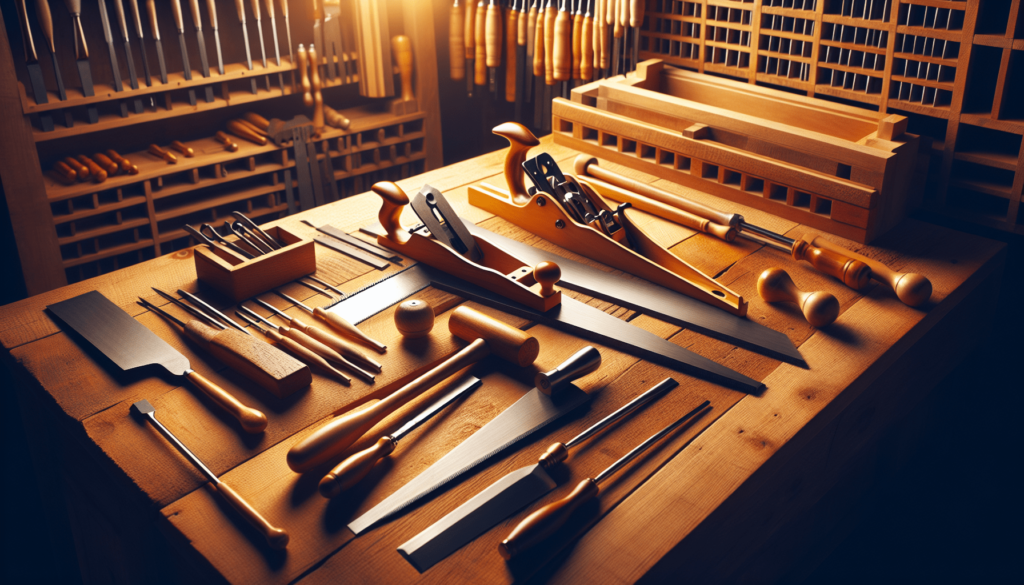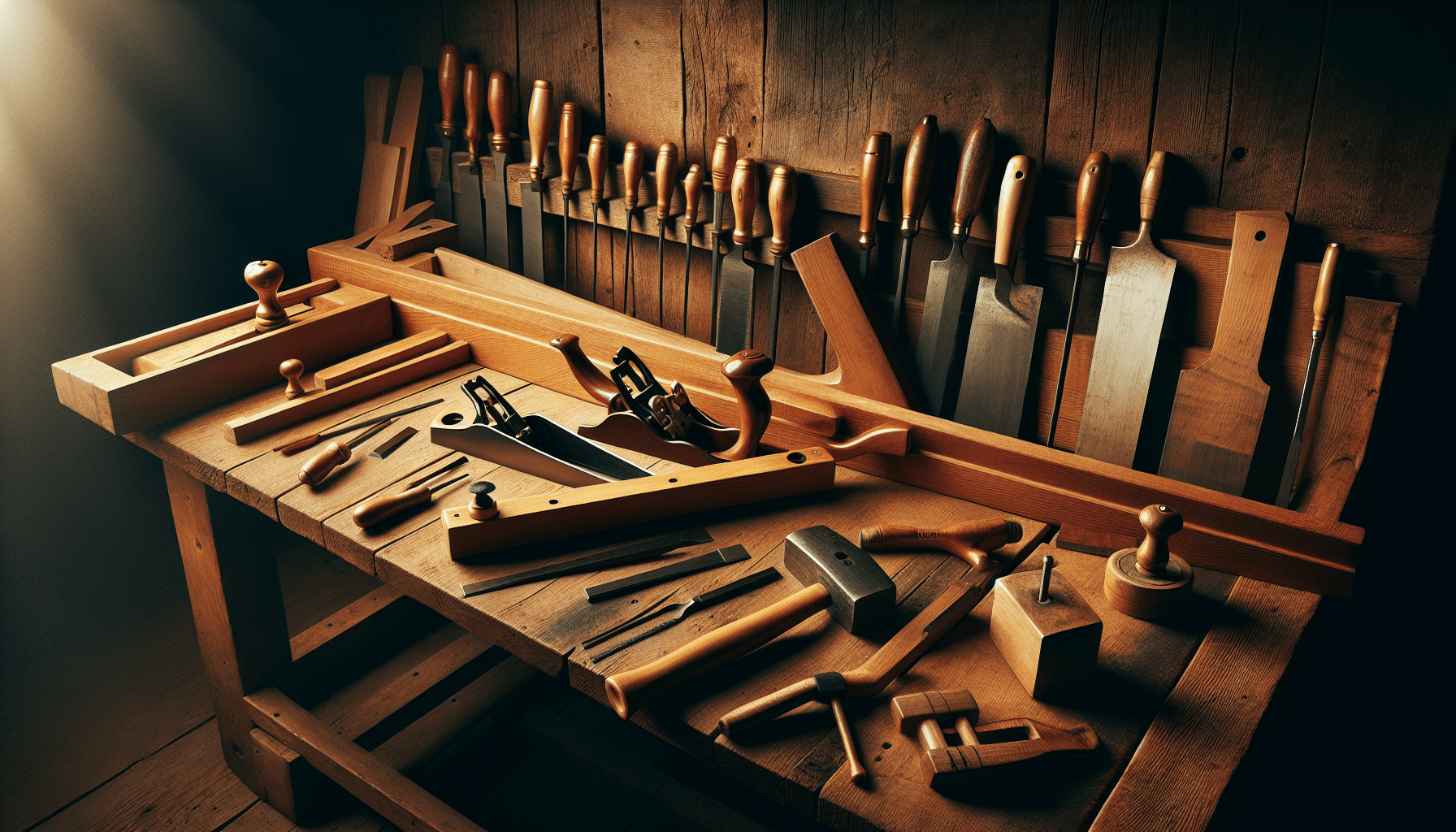Have you ever wondered what tools you need to start your woodworking journey? Embarking on the path of woodworking can be both thrilling and overwhelming, especially when it comes to figuring out which tools are essential for getting started. You might find yourself browsing through tool stores or websites, overwhelmed by the sheer variety of tools available. No worries, though—this guide is here to help you understand exactly which tools you need and why. Whether you’re aspiring to create simple projects or more complex pieces, having the right tools will make all the difference. Let’s break down the essential woodworking tools every beginner should consider.
Hand Tools vs. Power Tools
Understanding the Basics
When you’re new to woodworking, you’ll want to get familiar with both hand tools and power tools. Each has its own strengths that can cater to different needs, so it’s important to balance and understand your choices. Hand tools are great for precision work and are generally less expensive, making them an excellent choice for beginners. Power tools, meanwhile, can make tasks faster and less labor-intensive but often come with a higher price tag.
Hand Tools: Essential Basics
Hand tools are your manual arsenal, providing precision and control without the need for electricity or batteries. Here’s a look at some of the basic hand tools you should consider:
- Hammer: A claw hammer is versatile, and you’ll use it for everything from driving nails to carefully tapping parts into alignment.
- Screwdrivers: A good set of screwdrivers, both flathead and Phillips, is essential for assembling projects and making adjustments.
- Chisels: Used for carving and chopping wood to create clean, defined edges and shapes.
- Hand Saw: Ideal for quick cuts and working on projects without power tools; a panel saw is typically a good starting point.
- Measuring Tape: Accurate measurement is critical in woodworking, making a dependable measuring tape a must-have.
Power Tools: Get Started with the Basics
Power tools make your tasks efficient by cutting down on time and physical effort. While they represent a bigger investment, they often pay off by making complex projects more achievable. Key power tools include:
- Power Drill: Indispensable for both drilling holes and driving screws, a power drill is perhaps the most versatile power tool you can own.
- Jigsaw: A jigsaw is excellent for cutting curves and intricate designs. It’s a flexible tool that can handle many types of cuts.
- Circular Saw: This is your go-to tool for making fast, straight cuts. With the right blade, it can tackle a variety of materials.
- Random Orbital Sander: Essential for smoothing surfaces and getting rid of splinters. It leads to a professional finish with less elbow grease.
Setting Up Your Workspace
Creating a Safe and Efficient Environment
Your workspace is the foundation of your woodworking projects. You don’t need a massive shop to work in, but you do want an area where you can safely and comfortably house your tools and materials. A garage, a basement, or even part of your living room can serve this purpose.
Key Workspace Essentials
- Workbench: The heart of your workspace. A sturdy, flat workbench provides a place to organize your tools, assemble projects, and more.
- Lighting: Good lighting is crucial when working with detailed tasks to ensure safety and accuracy.
- Ventilation: If working with power tools, proper ventilation is important to avoid dust buildup and ensure good air quality.
- Storage Solutions: Shelves, pegboards, and tool racks can help you keep your area tidy and tools within easy reach.
Analyzing Wood Types and Their Uses
Getting to Know Your Materials
Understanding different wood types is crucial for achieving the best possible result in your projects. Different woods excel in varying applications due to their hardness, grain, color, and ease of use. Selecting the right wood for a particular job can make a huge difference in the outcome of your project.
Common Wood Types for Beginners
Here’s a table that breaks down common wood types and where they’re best used:
| Wood Type | Characteristics | Best Used For |
|---|---|---|
| Pine | Soft, easy to work with, affordable | Furniture, cabinets |
| Oak | Hard, durable, prominent grain | Flooring, furniture |
| Birch | Strong, pale color, smooth finish | Plywood, cabinets, molding |
| Maple | Hard, dense, smooth-grain | Flooring, cutting boards, furniture |
| Cherry | Rich color, moderately hard | Fine furniture, cabinetry |
Choosing the Right Wood
When selecting wood, consider factors like the project’s intended use, environmental conditions (like humidity and temperature), and your own skill level. Softwoods like pine are forgiving and less expensive, making them a good choice for beginners. Hardwood options might be more challenging but offer strength and durability.
Building Skills with Starter Projects
Start Small and Grow
It’s important to select projects that match your skill level. By starting small, you can learn valuable skills and gradually increase the complexity of your projects as you gain confidence and experience.
Sample Starter Projects
- Simple Bookshelf: Teaches you measuring, cutting, and assembly basics.
- Birdhouse: Ideal for experimenting with different joints like dovetail or mortise.
- Cutting Board: Introduces you to sanding, finishing, and careful cutting techniques.
- Picture Frame: A great way to practice miters and precise cuts.

Tool Maintenance and Care
Keep Your Tools in Peak Condition
Investing in tools is just the beginning. Maintaining them ensures they perform well and last a long time. Many tools only need basic care to remain in top shape.
Basic Maintenance Tips
- Sharpen Blades: Dull blades make cuts harder and more dangerous.
- Oil Moving Parts: Helps prevent rust and ensures smooth operation.
- Clean Regularly: After every use, clean your tools to remove dust and debris.
- Store Properly: Use protective covers and store tools in a dry environment to avoid damage.
Staying Safe in the Workshop
Prioritize Safety Always
Woodworking should be enjoyable, but safety can’t be overlooked. Always wear protective gear and follow recommended safety procedures to prevent accidents.
Essential Safety Practices
- Wear Safety Goggles: Protect your eyes from flying debris.
- Use Ear Protection: High decibels from power tools can damage hearing over time.
- Secure Workpieces: Always clamp down pieces to avoid slipping during cuts.
- Read Manuals: Always understand tools before use, following specific safety instructions.
Embarking on the woodworking journey can be very fulfilling, especially when you’re well-prepared with the right tools and knowledge. By understanding both hand and power tools, setting up an efficient workspace, picking the right materials, and prioritizing safety, you’ll be well on your way to creating wonderful projects. Here’s to making sawdust and having fun with woodwork!

